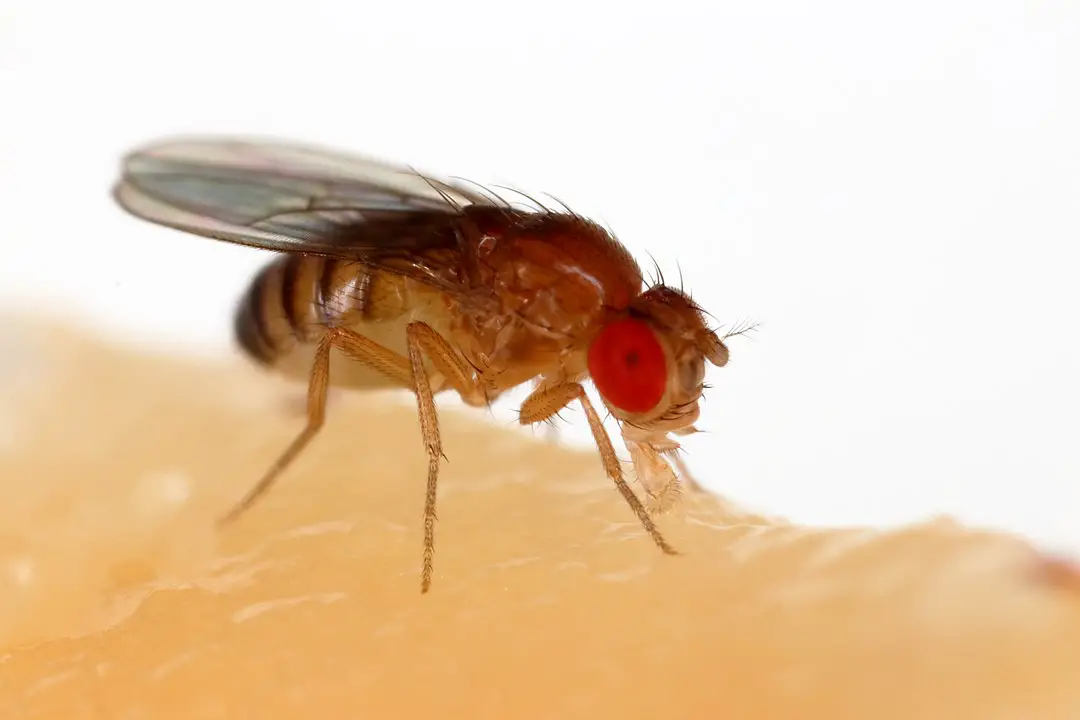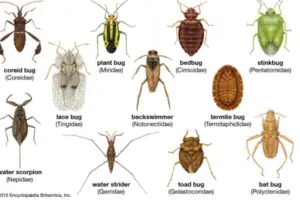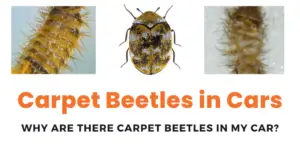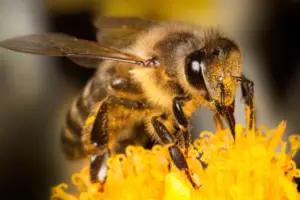Have you ever swatted at a fly, only to have it reappear moments later, seemingly unscathed? You might wonder, just how long do these persistent creatures live, anyway?
Understanding the lifespan of flies is surprisingly important, and this guide delves into the fascinating world of these common insects.
Flies, like many other creatures, undergo a metamorphosis during their life cycle. They begin as tiny eggs, hatch into legless maggots, transform into immobile pupae, and finally emerge as the winged adults we know and (often) loathe.
While the entire metamorphosis can take as little as a week under ideal conditions, the adult fly’s lifespan is the true focus of our curiosity.
In the following sections, we’ll delve deeper into the factors that influence a fly’s lifespan, explore the fascinating world of fly reproduction, and discover some interesting facts about these ubiquitous insects.
So, stay tuned as we uncover the secrets behind the fly’s seemingly short but significant life!
How Long Do Flies Live
On average, a common house fly lives for 28 days. This may seem like a brief existence, but it’s crucial for their success as a species.
Their short lifespan allows for rapid reproduction, ensuring the continuation of their population.
However, it’s important to note that this is just an average, and some fly species can live for considerably less [2]. Fruit flies, for example, only have a lifespan of about 8-10 days [1].
Understanding how long flies live is not just a matter of trivia. It has practical implications as well.
Knowing their lifespan can help us develop more effective control methods, whether it’s preventing them from entering our homes in the first place or eliminating them if they become a nuisance.
Life Cycle of Flies
The seemingly short life of a fly is packed with dramatic transformations. Like many insects, they undergo a complete metamorphosis, going from a tiny egg to a winged adult through distinct stages.
Each stage has its unique characteristics and vulnerabilities, shaping the overall lifespan of the fly.
The Egg Stage
The fly’s journey begins as a minuscule egg, typically laid in batches on decaying organic matter or moist areas.
These eggs are incredibly tiny, often measuring just a millimeter in length [1]. Their incubation period is brief, lasting anywhere from 12 to 24 hours [2]. However, the success of this stage is highly dependent on environmental factors.
1, Temperature
Warmer temperatures, typically between 70-80°F (21-27°C), are ideal for egg development [1]. Colder temperatures can significantly slow down hatching, while excessive heat can lead to egg death [3].
2. Humidity
Moisture plays a crucial role in egg viability. Eggs laid in dry environments tend to dehydrate and fail to hatch [4].
The Larval Stage
Once hatched, the tiny fly enters the larval stage, commonly known as a maggot. This worm-like creature is a voracious eater, consuming decaying organic matter at an impressive rate.
This stage is crucial for growth and development, and it can last anywhere from 4 to 7 days [2].
Food availability
As mentioned earlier, the availability of food significantly impacts the development of larvae. Abundant food sources lead to faster growth and shorter larval durations [5].
Temperature
Similar to the egg stage, warmer temperatures generally accelerate larval development, while cooler temperatures can slow it down [1].
The Pupal Stage
After a period of feeding and growth, the larva enters the pupal stage. During this immobile phase, the fly undergoes a remarkable metamorphosis, transforming into its adult form. This stage typically lasts 4 to 6 days [2].
Environmental factors
While the pupal stage is less susceptible to external influences than the previous stages, extreme temperatures or fluctuations can disrupt development and lead to mortality [6].
Humidity
Similar to the egg stage, maintaining moderate humidity is crucial for successful pupal development [7].
The Adult Stage
Finally, the adult fly emerges from the pupal case, ready to take flight. This stage is where most of us encounter these buzzing insects.
However, the adult lifespan varies considerably depending on the species:
House flies: As mentioned earlier, the average lifespan of a house fly is around 28 days [8].
Fruit flies: These smaller flies have a shorter lifespan, typically lasting only 8-10 days [9].
Factors that influence the longevity of adult flies
Several environmental factors can influence the longevity of adult flies:
Temperature
Warmer temperatures generally lead to shorter lifespans in adult flies, while cooler temperatures can extend their lives to some extent [10].
Food and water availability
Access to adequate food and water sources is essential for adult fly survival, and deficiencies can shorten their lifespan [11].
Exposure to pesticides or insecticides
Contact with insecticides can significantly reduce the lifespan of adult flies [12].
Factors Affecting Fly Lifespan
While the average housefly lives for around 28 days, the reality is far more nuanced. As with many living things, the lifespan of a fly is influenced by a complex interplay of various factors.
So, understanding these factors can help us not only manage fly populations but also gain a deeper appreciation for the intricate web of life.
1. Species Variations
One of the most significant factors influencing fly lifespan is the species itself. As mentioned earlier, house flies and fruit flies exhibit vastly different lifespans, with house flies living nearly three times longer.
This disparity highlights the unique adaptations and strategies different fly species have evolved to survive and reproduce in their respective environments.
2. Environmental conditions
Beyond species variation, environmental conditions play a crucial role in determining a fly’s lifespan. Here are some key factors:
i. Temperature
As a general rule, warmer temperatures accelerate the development and lifespan of most fly species.
This is because warmer temperatures increase metabolic rates, allowing them to grow and reproduce faster.
However, excessively high temperatures can be detrimental, leading to dehydration and even death.
ii. Humidity
Moderate humidity levels are crucial for fly survival throughout their life cycle. Eggs laid in dry environments tend to dehydrate and fail to hatch, while pupae in excessively humid conditions may struggle to emerge successfully.
iii. Food and water availability
Like most living organisms, access to adequate food and water is essential for fly survival and reproduction. Deficiencies in these resources can significantly shorten their lifespan.
3. Predators and Parasites
The natural world is a complex ecosystem where various organisms interact and influence one another.
In the case of flies, predators and parasites play a significant role in regulating their population dynamics.
- Predatory insects, birds, and even amphibians actively hunt and consume flies, contributing to their mortality rate. This natural predation helps to keep fly populations in check and prevents them from reaching overwhelming numbers.
- Parasitic organisms, such as mites and wasps, can also impact fly lifespan. These parasites often lay their eggs inside fly larvae, eventually consuming them from within and emerging as adult parasites.
Common Types of Flies and Their Lifespans
While the housefly may be the most familiar buzzing companion, the world of flies is remarkably diverse.
Each species has adapted to specific ecological niches, and their lifespans reflect these adaptations.
Here’s a brief introduction to some common fly types and their typical lifespans:
1. House Fly (Musca domestica)
The ubiquitous house fly, as we’ve seen, has an average lifespan of around 28 days. They thrive in areas close to human habitation, feeding on decaying organic matter and waste.
2. Fruit Fly (Drosophila melanogaster)
These tiny flies, often seen hovering around fruit bowls, have a considerably shorter lifespan of only 8-10 days. Despite their brief lives, their rapid reproduction allows them to maintain large populations.
3. Blow Fly (Calliphoridae)
These larger flies, also known as carrion flies, play a crucial role in the ecosystem by decomposing dead animals. Their lifespan ranges from 1-2 weeks, allowing them to complete their decomposition duties.
4. Flesh Fly (Sarcophagidae)
Similar to blow flies, flesh flies also feed on carrion. However, unlike blow flies, they can lay eggs directly on the dead animal, bypassing the maggot stage. Their lifespan is also 1-3 weeks.
5. Stable Fly (Stomoxys calcitrans): These persistent flies, known for their painful bites, primarily feed on the blood of mammals, including humans. Their lifespan is slightly longer than other common flies, ranging from 2-4 weeks.
While these are just a few examples, the diverse world of flies encompasses hundreds of species, each with unique characteristics and lifespans.
A proper understanding of these variations allows us to appreciate the intricate web of life and the ecological roles these insects play.
Here is a video on Youtube that you can watch to learn more about the fly lifecycle: Life cycle of the fly, flies laying egg, eggs hatching by Green Best Product
The Role of Flies in Ecosystems
While flies may often be seen as a nuisance, they play surprisingly important roles in maintaining healthy ecosystems.
Their contributions range from cleaning up our environment to supporting vital ecological processes.
Let’s delve into some of the benefits these often-maligned insects provide.
1. Decomposition And Nutrient Recycling
One of the most crucial roles flies play is in decomposition. When animals die, their bodies decompose, releasing essential nutrients back into the ecosystem.
Flies, particularly blow flies and flesh flies, act as nature’s cleanup crew, feeding on decaying organic matter.
As their maggots develop, they break down complex organic compounds into simpler forms, making them readily available for plants and other organisms.
This process facilitates nutrient recycling, ensuring a continuous flow of essential elements within the ecosystem.
2. Pollination
While bees often take center stage in the pollination conversation, several fly species also contribute significantly to this vital process.
Flies like hoverflies, bee flies, and midges play a crucial role in pollinating various plants, especially those that are unattractive to bees due to their odor or shape.
For example, hoverflies are essential pollinators for cocoa trees, the source of our beloved chocolate.
By transferring pollen between flowers as they feed on nectar, flies contribute to plant reproduction and ensure the diversity of plant life in various ecosystems.
3. Contribution to Food Webs
Flies occupy various positions within food webs, serving as both predators and prey. They feed on a variety of organic matter, including decaying materials, dung, and even other smaller insects.
This makes them a valuable food source for numerous animals, including birds, reptiles, amphibians, and other insects.
Their presence within the food web helps maintain a balanced ecosystem and ensures the survival of various species at different trophic levels.
Human-Flies Interaction
While flies play important ecological roles, their interactions with humans can be complex.
Health Risks Associated with Flies
Flies can pose several health risks to humans. They can act as passive carriers of various pathogens, including bacteria, viruses, and parasites, which they can transmit through contaminated surfaces or even directly through bites.
Some fly species, like stable flies, can bite humans, causing irritation and discomfort.
Strategies for Fly Control in Human Environments
Fortunately, various strategies can help us minimize fly populations and their associated risks in our homes and surroundings. These include:
1. Maintaining proper hygiene and sanitation
Practicing good hygiene habits like regular trash disposal, cleaning up spills, and keeping food covered can significantly reduce fly attraction to food sources and breeding grounds.
2. Utilizing physical barriers
Installing screens on windows and doors and sealing cracks and crevices around entry points can prevent flies from entering our living spaces.
3. Employing traps
Fly traps, both commercially available and homemade, can help capture and eliminate adult flies.
4. Considering natural methods
Utilizing natural fly repellents, such as essential oils like citronella or lavender, can deter flies from entering specific areas.
Importance of Waste Management and Sanitation
Effective fly control requires a broader approach beyond individual actions. Implementing proper waste management practices at the community level is crucial.
This includes regularly emptying trash bins, maintaining clean public spaces, and composting organic waste responsibly.
So, by working together to maintain a clean and hygienic environment, we can significantly reduce fly populations and minimize the associated health risks.
Related Post: Where Can I Buy Honey Bee Cozy Bee Hive Wraps? Answered
Conclusion
This article has delved into the fascinating world of flies, uncovering the secrets behind their lifespans and their surprising contributions to our planet.
We’ve learned that:
- Fly lifespans vary significantly depending on species, environment, and other factors.
- Flies play crucial roles in decomposition, nutrient cycling, pollination, and supporting food webs.
- While they can pose health risks to humans, effective control strategies and proper sanitation can minimize these risks.
The complex relationship between flies and humans allows us to appreciate their ecological value while implementing strategies for peaceful coexistence.
As humans when we foster a balance between protecting ourselves and respecting their role in the ecosystem, we can create a more harmonious shared environment for both humans and these often-underrated insects





